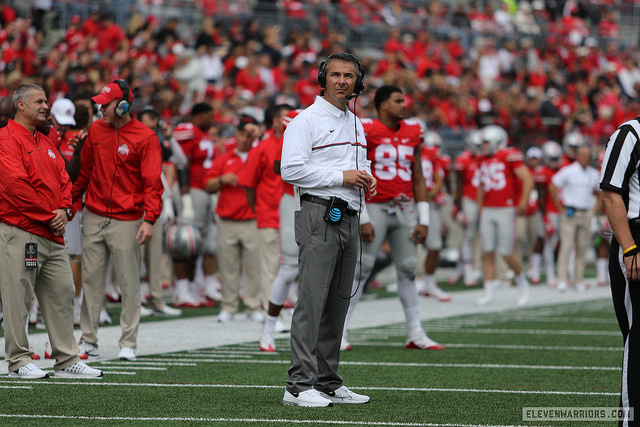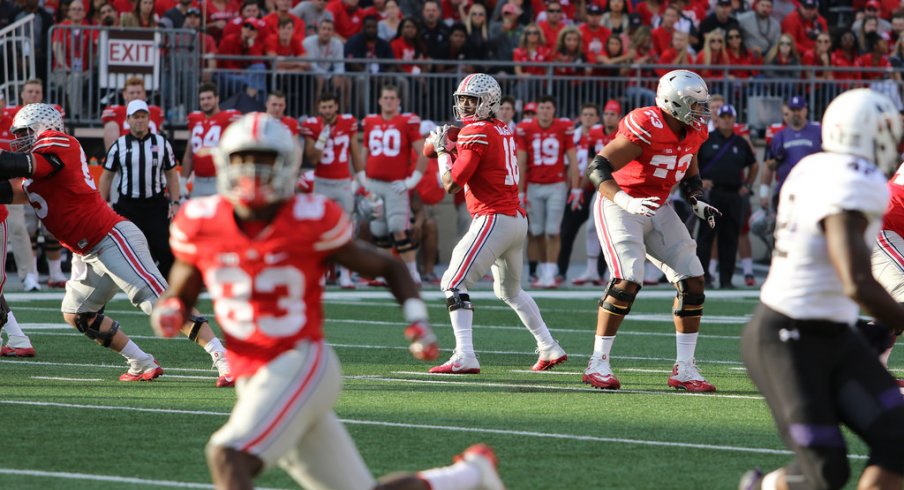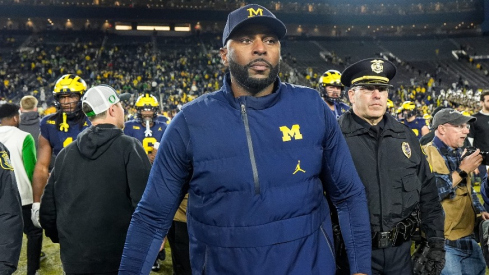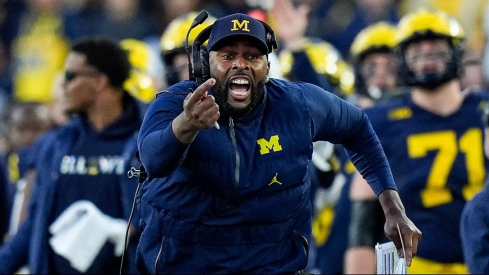Urban Meyer and Ohio State know exactly who they are when it comes to their passing game. A work in progress, not as exciting, take what you can get, whatever.
The Buckeyes are not ready to force things and as a result turn the ball over, even with a stout defense that sits statistically as one of the best in the country (sixth in scoring and total defense through eight games) on the other side of the field. They can't really afford to do that, especially when opponents instruct their secondaries to play deep to take away the downfield threat by using Cover 3.
In the minds of Meyer, offensive coordinators Ed Warinner and Tim Beck in addition to quarterback J.T. Barrett, there is no sense chucking the ball 40 yards down the field if the success rate is poor because of the lack of a deep threat and defenses doing their best to take it away.
“We don't force balls here, we just don't do that," Meyer said Tuesday on the Big Ten teleconference.
But that doesn't mean Meyer goes through practice each week thinking there isn't a chance a time to stretch the field vertically is never going to come.
“Certainly the first three drives and the last few drives (against Northwestern) were fantastic,” Ohio State's head coach said on Monday. “I'm seeing improvement. We're not as explosive as we have been. And is it the receivers' fault? No. James Clark came clean, we missed him on a deep ball.
“I do see it coming.”
Barrett completed 21 passes for 223 yards against the Wildcats in Ohio State's 24-20 victory. The biggest play through the air went to K.J. Hill in the fourth quarter, when the wide receiver faked a block and found a soft spot in Northwestern's zone between a linebacker and safety.
“We have talented guys. And in practice we see them improving. And like anything, it takes—throwing the football is timing.”– Urban Meyer
Barrett threw a strike to Hill that traveled about 15 yards and the redshirt freshman turned it into a 34-yard gain. While some fans undoubtedly thought that maybe Ohio State found its "next Devin Smith" either because of that play or the 47-yard touchdown catch Hill made in the season opener, it is time for them to quit searching for a player with track speed and outstanding tracking ability when the ball is in the air.
“I know we missed one shot, I missed it to James on 3rd down,” Barrett said on Monday. “That was on me as far as the ball placement.”
Meyer's offense isn't designed to throw it vertically all the time—it has never been like that, even when he won two national championships over the span of three seasons at Florida. Smith is a special talent with an unbelievable penchant for blowing past defenders and hauling in a ball thrown down the field.
He helped the Buckeyes complete 32 passes of at least 30 yards during their 2014 national title season. In Meyer's four other seasons in Columbus, the number of pass plays in that distinction never rose above 18. This season, Ohio State has nine.
Catching the ball down the field like Smith did is not part of the repertoires of the wide receivers currently playing considerable snaps on offense. Freshmen Austin Mack and Binjimen Victor could provide it but it is clear the Buckeyes are not confident enough in their development to let them try.
“Ben Victor has been so close, we've just got to get him pushing through the hump,” Meyer said.
The only time so far this season the Buckeyes absolutely had to hit something down the field in order to win a game was at Penn State two weeks ago. Officials missed a pass interference call on a ball thrown to Clark that bounced off his helmet with under 2 minutes left and the Buckeyes down by three. Even in that game, you could make the argument Ohio State lost to the Nittany Lions more because of special teams screw-ups than an inability to stretch the field.
It's a part of the game that makes things easier to move the ball, sure, but the Buckeyes are 7-1 and a few plays away from being 8-0. With all the new faces—many who are still battling through growing pains—this is simply what they are right now.
“We have talented guys. And in practice we see them improving,” Meyer said. “And like anything, it takes—throwing the football is timing. We're seeing a lot of press coverage.
“When you separate from press, it has to be an accurate throw and we have to protect the quarterback. It's all three. It's nothing new. It's the essence of throwing the ball.”
All of those intricacies must be in order for any team to have a chance to connect on the deep ball. Meyer calls Ohio State a "shot team," but isn't going to push the issue if there are better chances to move the ball in different ways. Especially if he sees that part of the offense taking steps forward in practice.

“When we go against our defense, our defense makes you throw it deep. We’re challenging every throw so you have to throw over the top so in practice we do complete them,” Barrett said. “In the game, it’s kind of one of those rare situations where it only happens every now and then; with our defense, it’s almost every three plays. With that, in practice, we have more opportunities to complete them so we do but then in the game, we have those one or two times. We just haven’t hit them.”
Barrett shares the same attitude as his head coach with regards to the deep ball—"it's going to happen." The quarterback is understandably frustrated with having to answer questions and take flack from outsiders for not connecting on deep shots like earlier in the year when defenses didn't have much of an idea about the receivers he had at his disposal. Games against weak defenses didn't hurt either and resulted in a 56 points per game average during the non-conference part of the schedule.
Plus, none of the players are Smith, with an uncanny knack to make an adjustment on a ball 30+ yards down the field and catch it. There aren't too many of those in college football period.
In Meyer's and Barrett's mind, that's OK. The Buckeyes aren't going to stress about it too much as long as they keep winning and see it progressing on the practice field. Both see each happening, not just with the deep passing game but the offense and team as a whole.
“I don't think there has been any regress by any means,” Barrett said. “I think at times, so when I say that even when it looks bad you're probably like, 'man that's a step back.' Where there's a need for that, to push through those things because then if everything is easy, when something hits you hard later on in the season you're not going to know how to handle it.”
Added Meyer: “I guess I'm not normally like this, but I see a lot of positives from our teams because I know what we're playing and I know these young guys and they are getting better because I see it from maybe a different angle, viewpoint than a lot of other people.”


